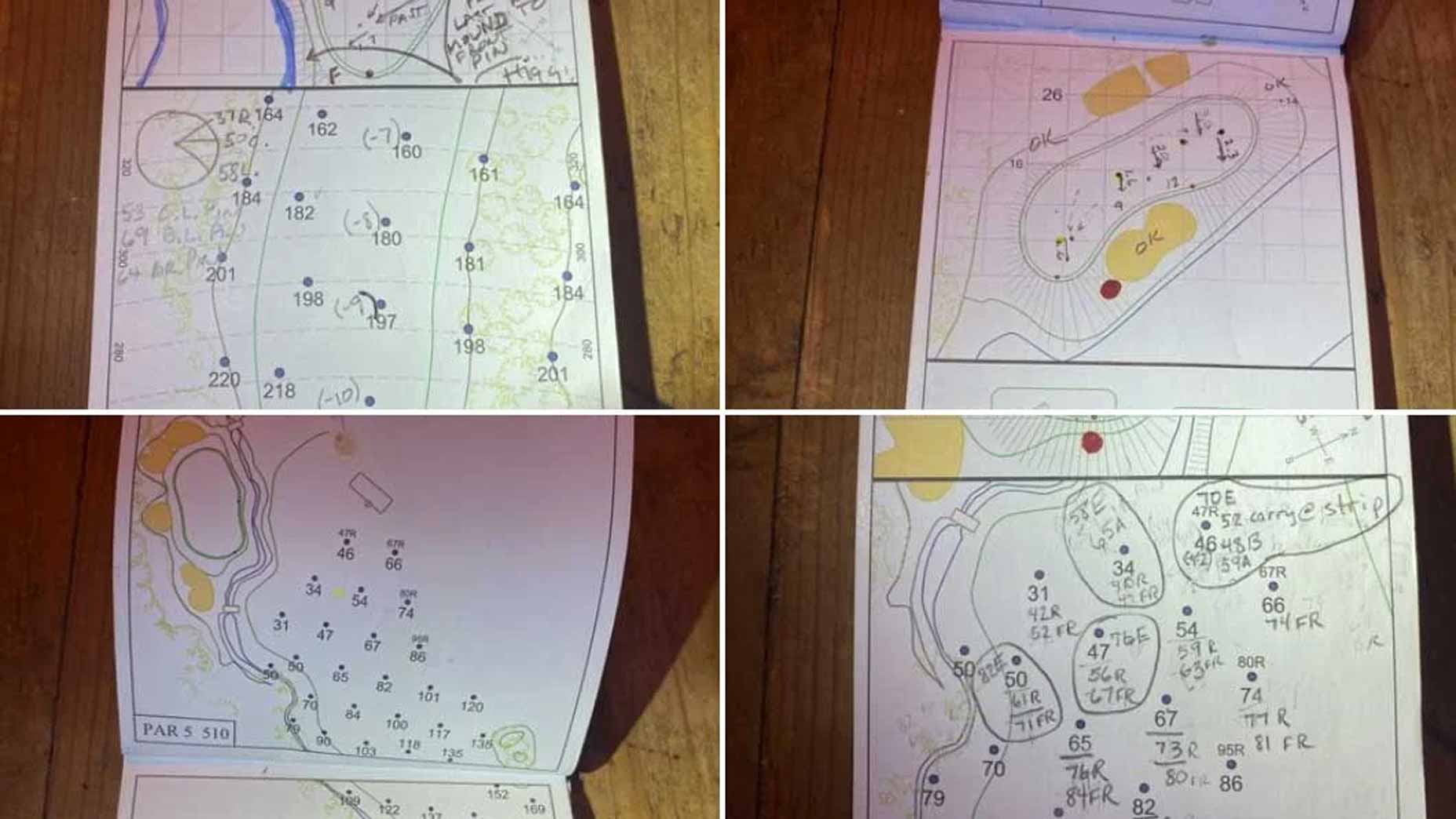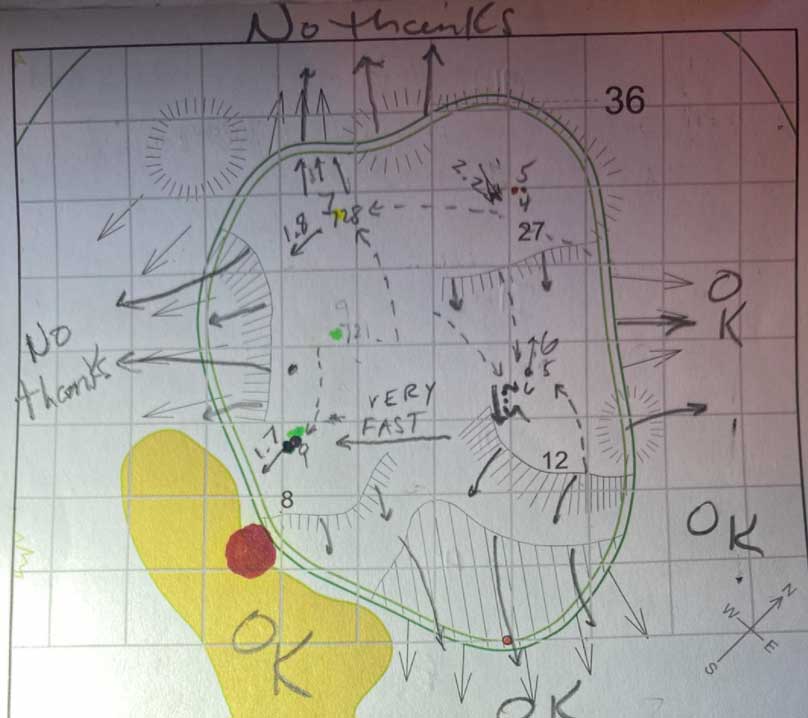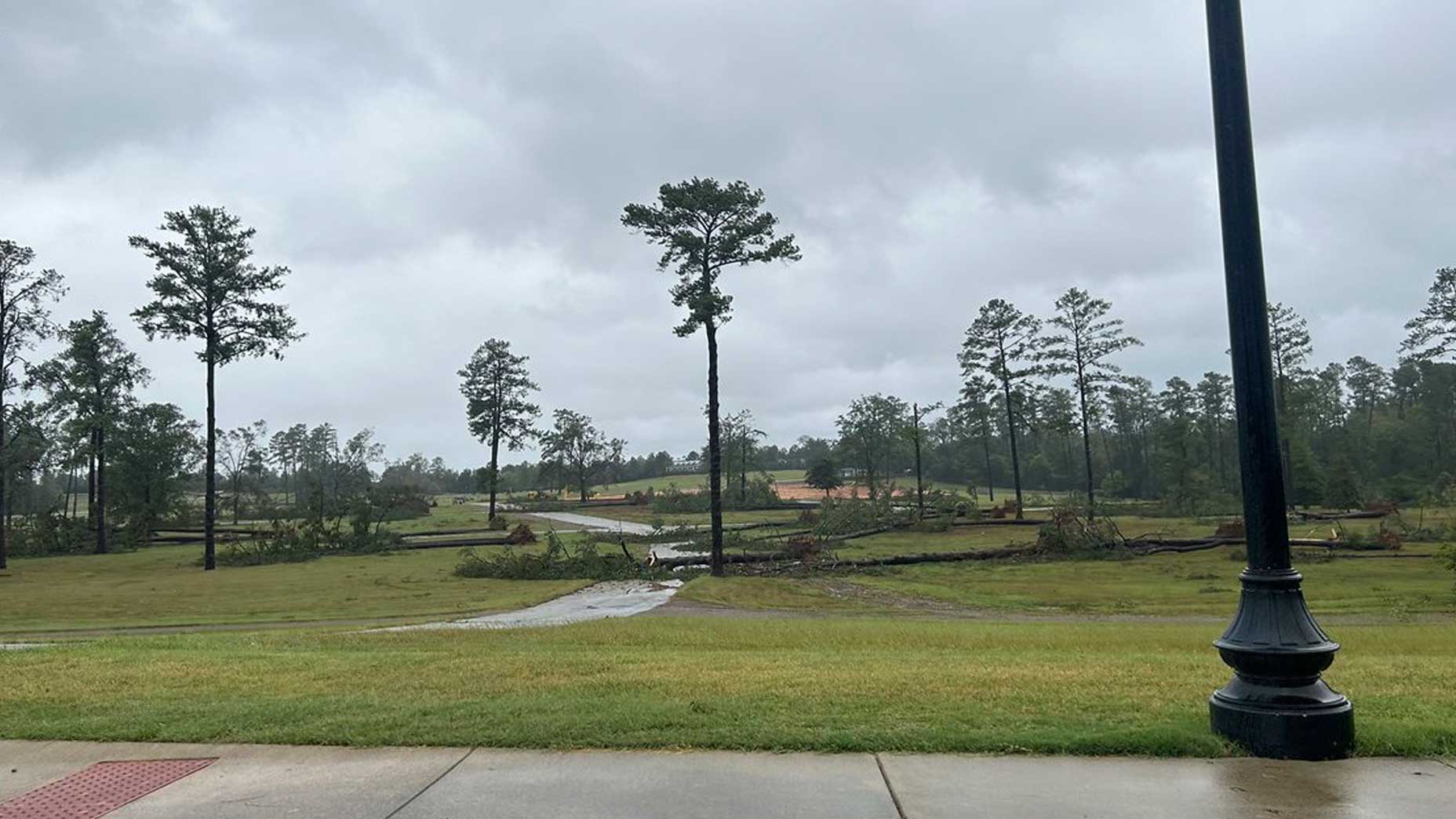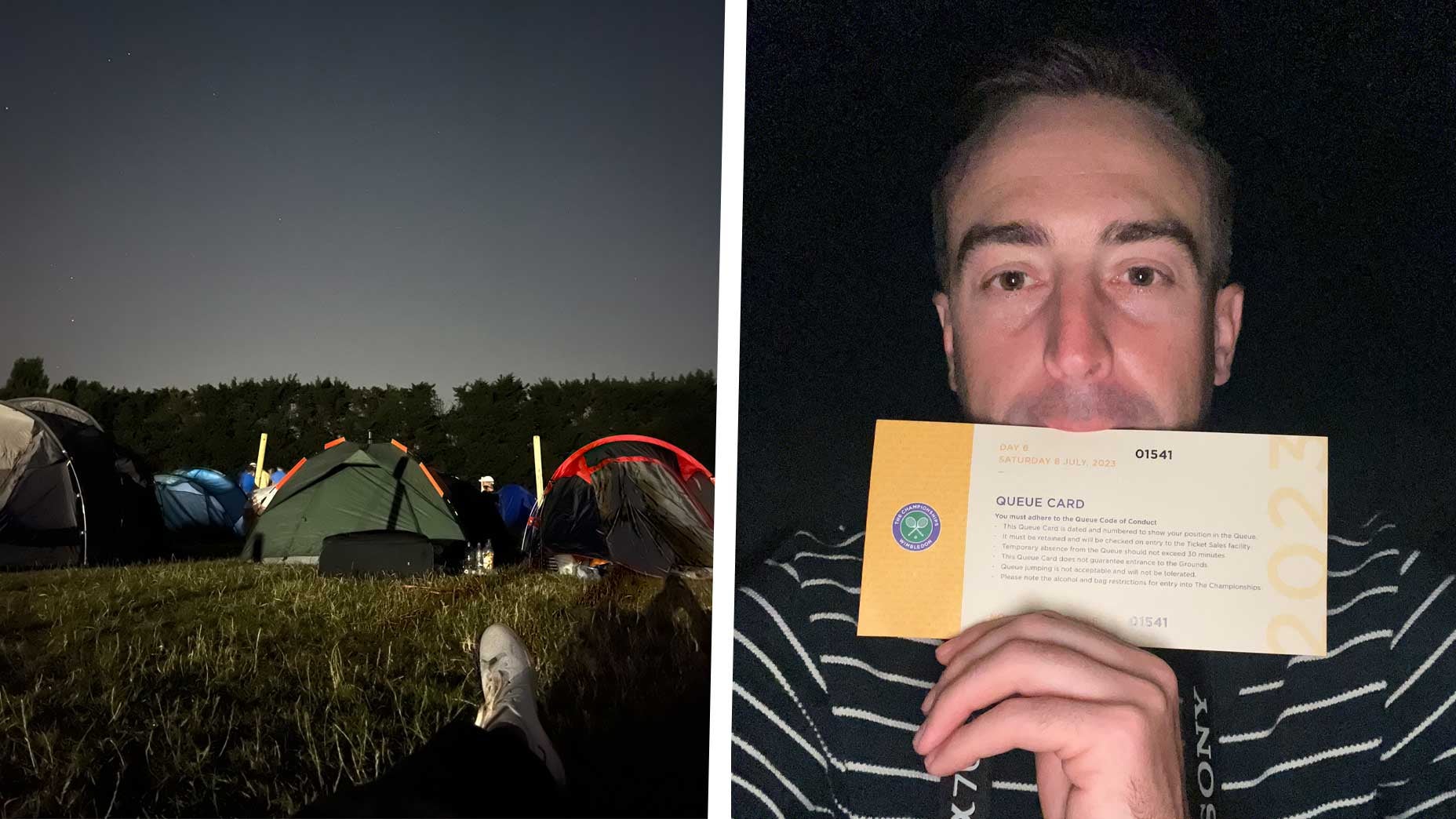Caddie’s fascinating Augusta National yardage book spills Masters secrets
- Share on Facebook
- Share on Twitter
- Share by Email

Fount of knowledge: John Wood's Augusta National yardage book.
@johnwould
When John Wood — long one of the most respected and knowledgeable caddies on Tour — speaks, people listen. Today more than ever. After parting ways with Matt Kuchar last summer, Wood landed a gig pacing the fairways for NBC Sports, meaning millions of golf fans now get to hear his observations on the game.
When Wood tweets, fans also pay attention, or at least they did on Monday when Wood published his chock-full-of-goodness Augusta National yardage book to his Twitter feed. Peppered with handwritten notes and symbols, Wood’s fascinating hole charts — which look like something John Nash might scribble on a window pane — not only unlock the secrets to Augusta National but also will give you a new appreciation for the attention to detail that the best loopers bring to the job. You can check it out here:
Masters Week. Thought it would be interesting (@NoLayingUp ) to show a real ANGC yardage book. My favorite course in the world to caddy. So exacting. Only course in the world I kept a chipping book (last 2 photos.) Any questions? pic.twitter.com/nNwNsHBCJD
— John Wood (@Johnwould) April 6, 2021
“How do you simplify this level of detail for the players?” Wood was asked on the thread.
“Homework,” Wood said. “Repetition and thinking ahead to what they’ll need. You want to have all the info, so if you have any disagreements, you can quickly give them your reasoning. That’s why you’ll see many caddies with their yardage book out as they walk to the ball.
View from the top: Every hole at Augusta National, explained by a different Masters championBy: GOLF Editors
“Slow, fumbling answers create Indecision and doubt in a player.”
Wood said it would take him roughly 15 seconds to process his data and give his player a recommendation. “Usually less,” he said.
All of Wood’s maps are worth poring over, but here are 5 nuggets that caught our eye:
1. The “no thanks” zones
Everyone knows there are places at Augusta National where you absolutely cannot miss. Wood spells those areas out with two words that get to the point: “No thanks.” Among his no-thanks zones: left of and behind the 1st green; the bunker behind the green at 7; the back-right bunker on the par-3 16th. On the 8th green, he uses a few more words to call out the trouble: “Cannot be pin high or long to right pins.”

2. Some putts are slow!
Well, relatively speaking. While most greens at Augusta National are firmer and faster than your dining room table, some aren’t quite so slick. The right side of the 14th green, for example, is “slow,” Wood noted. Same goes if you’re putting back up the middle-right portion of the 13th green. Putts from the bottom half of the 6th green to the top-right shelf, Wood wrote, are “crazy slow.”
3. As if 11 wasn’t already hard enough…
The downhill approach to 11‚ where a pond guards the left side of the green, is one of the scariest shots in golf, especially should you arrive on that hole with a Masters Sunday lead. “If you ever see me on the 11th green in two,” Ben Hogan once said, “you’ll know I missed my second shot.” In other words, no shame in bailing out right. But here’s another warning via Wood: “Do not play off last right mound to front pin.” Next to that annotation Wood drew an arrow representing a ball bounding into the pond. Now you know!

4. The sneaky importance of Rae’s Creek
On each green map, Wood placed a red dot on one side of the green or the other. That mark indicates the direction of Rae’s Creek, which is useful information to know when reading putts. “Lowest point on the course is the lowest point of Rae’s Creek near the 11th and 12th greens,” Wood said in the thread.
5. The hazard you can’t see
The wind is a huge factor at Augusta National, especially for caddies who are tasked with helping their players pull clubs. The maps Wood shared don’t show his wind notes, but they’re there, just above each hole map.
“I would note the wind direction and strength above this page, along with front #, total #, what we hit off the tee and into the green, and how far the ball flew. In case later in the round you need to tell him: “Look, on 5 we had the exact same wind direction and 7 flew 178.”
So there you have it, or some of it, anyway. Insightful stuff. Is Wood giving away too much hard-earned knowledge by sharing his learnings with the world? He doesn’t see it that way.
“ALL of this has to be double checked yearly,” Wood wrote in the thread. “Augusta National is a living breathing entity that continues to evolve from year to year.”
Want your very own Augusta National green book? Pick up one here from our sister company, GolfLogix:

GolfLogix Green Book
Latest In Instruction

Alan Bastable
Golf.com Editor
As GOLF.com’s executive editor, Bastable is responsible for the editorial direction and voice of one of the game’s most respected and highly trafficked news and service sites. He wears many hats — editing, writing, ideating, developing, daydreaming of one day breaking 80 — and feels privileged to work with such an insanely talented and hardworking group of writers, editors and producers. Before grabbing the reins at GOLF.com, he was the features editor at GOLF Magazine. A graduate of the University of Richmond and the Columbia School of Journalism, he lives in New Jersey with his wife and foursome of kids.










